The Durian: From Sapling to Spiky Treasure
6/2/20253 min read
The King of Fruits doesn’t earn its crown overnight. Growing a durian tree from sapling to a fully fruiting monarch is a journey that spans nearly a decade. Here's a detailed, science-backed walkthrough of the durian plant's lifecycle—from tiny sapling to full-blown durian harvest.
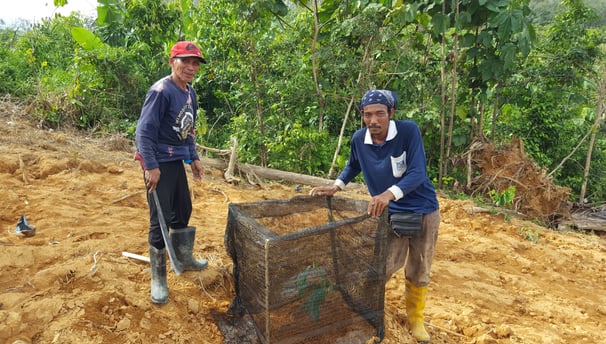

Durian trees can be grown from seeds or via grafting. Grafting is the more preferred method by farmers because:
Seed-grown trees take 10–12 years to bear fruit.
Grafted trees bear fruit in 7–9 years, sometimes even earlier.
🧠 Fun fact: Most commercial farms use clonal species—like Musang King (D197) or D24—to ensure fruit consistency and quality.
Key needs:
Warm, humid climate (25–35°C)
Well-drained, deep soil
Plenty of rain (1,500–2,500 mm/year)
🌱 The tree focuses on root and shoot development, needing frequent but careful watering, and partial shade.
Year 0–1: Seed or Grafted Sapling Takes Root
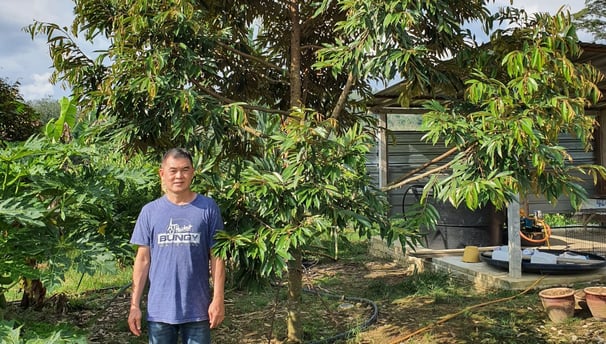

In these years, the durian tree starts shooting up rapidly, especially with proper NPK-balanced fertilisers.
Trees grow up to 1–2 metres per year.
Pruning begins to encourage a strong central leader and good canopy shape.
Farmers often install windbreaks, as durians hate strong winds, and the branches break easily.
🧠 Did you know? Durian leaves are lance-shaped and coppery underneath—this helps reflect sunlight and reduce water loss.
Year 1–3: Strong Vegetative Growth
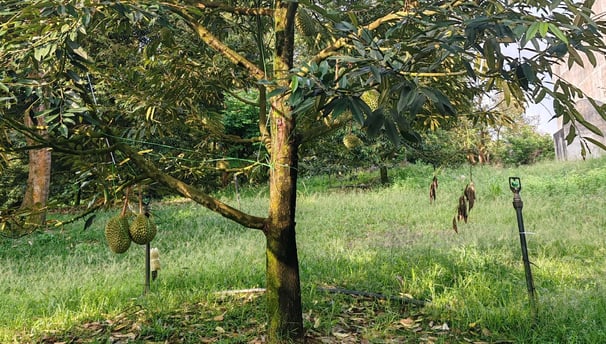

Trees now reach 3–5 metres tall. They may start showing early flower buds, but these are usually removed.
Why? Early flowering weakens the tree. Farmers allow the tree to channel energy into canopy development instead of fruit.
Key management tips:
Apply micronutrients: boron, zinc, magnesium
Control pests like mealybugs, red spiders and trunk borers
Mulch to retain soil moisture
Year 3–5: Pre-Reproductive Stage
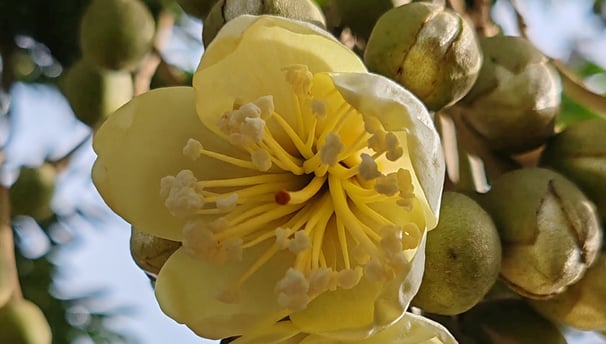

By year 5–7, trees begin natural flowering, especially in well-managed orchards. Durian is cauliflorous, meaning flowers grow from the main trunk and branches.
Trees flower 1–2 times/year, depending on region.
Flowers open at night and are pollinated by bats, especially the dawn fruit bat (Eonycteris spelaea).
🧠 Fun fact: Each flower has five petals and only lasts one night!
Pollination is crucial—if flowers aren’t pollinated within a few hours, no fruit develops. Farmers may encourage pollinators by:
Avoiding pesticide use during flowering
Planting banana or guava trees nearby to attract bats and bees
Year 5–7: Flowering Begins
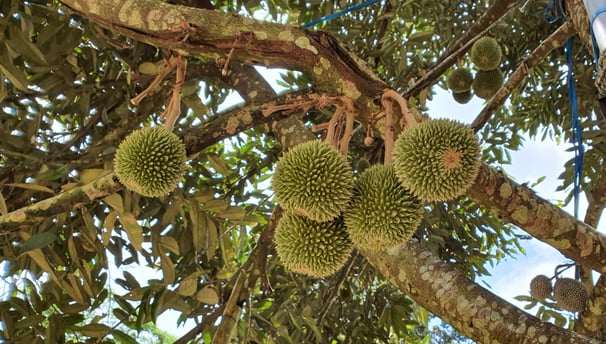

After successful pollination, fruit begins to form.
Fruits mature in 90–120 days, depending on cultivar and weather.
Signs of ripening: Fruit size, aroma, yellowing spikes, and a hollow sound when tapped.
Most varieties drop naturally when ripe. For Musang King, farmers often tie nets or cushion the ground to prevent damage from falls.
🧠 Pro tip: A healthy tree can yield 50–150 fruits/year once mature.
Year 7–9: First Fruit Set and Harvest
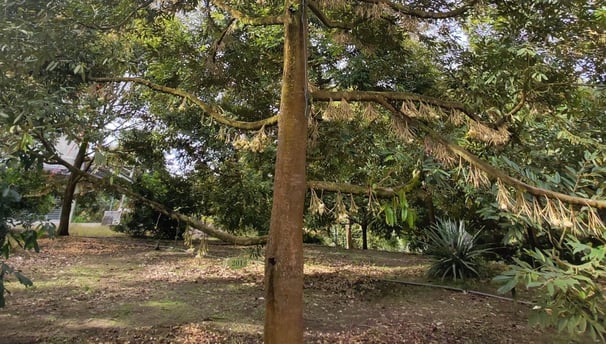

After fruiting, the tree needs recovery:
Heavy fertilization with potassium and phosphorus
Pest management (fruit borer, stem canker)
Canopy pruning to maintain good air circulation between the branches
Farmers often rotate between on-year (fruiting) and off-year (rest) cycles to keep trees healthy.
Post-Harvest Care
Growing durians takes patience, care, and an understanding of nature’s rhythms. From sapling to fruiting tree, every stage has a role to play. And while you wait 8–9 years, know that the reward is worth it—a creamy, aromatic, golden treasure encased in thorns.
So the next time you bite into a luscious Musang King, remember—it’s not just fruit. It’s nearly a decade of work, passion, and science.
DurioKing Farm
Discover and learn about the journey of our durian farm.
sign up for the freshest durian update!
Copyright © Durio King All rights reserved
